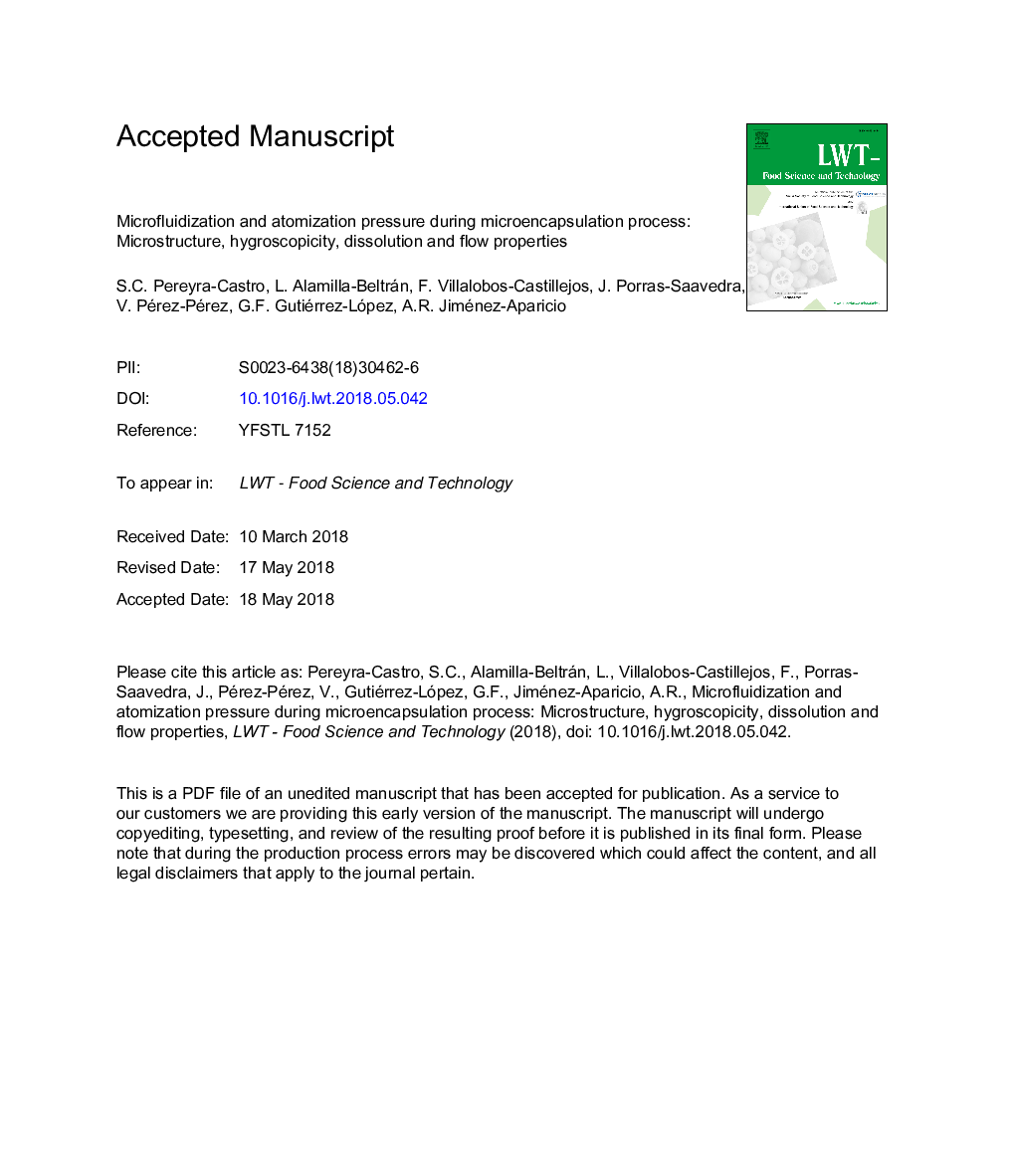| Article ID | Journal | Published Year | Pages | File Type |
|---|---|---|---|---|
| 8890527 | LWT - Food Science and Technology | 2018 | 29 Pages |
Abstract
The interaction between emulsification by microfluidization and the atomizing pressure during spray drying on microcapsule topography, particle size, flow properties, hygroscopicity, and dissolution was evaluated. The blend of chia oil with soy protein isolate and maltodextrin (as wall materials), in ratio 1:4 (active agent-wall materials), was homogenized by high pressure microfluidization and rotor-stator, and then spray dried under different atomization pressures (60, 100 and 140â¯kPa), at constant air-drying temperature. Microfluidization generated the smallest particles (<3.07â¯Î¼m), rough surface with nanopores (50-100â¯nm) and irregularities (indentations) comparing with the particles homogenized by rotor-stator, which showed a smooth surface; these characteristics influence on a greater water entrapment capacity, longer dissolution time and low dissolution capacity. The effect of pressure atomization was less evident; however, a high pressure reduced the particle size, dissolution capacity, and the hygroscopicity.
Related Topics
Life Sciences
Agricultural and Biological Sciences
Food Science
Authors
S.C. Pereyra-Castro, L. Alamilla-Beltrán, F. Villalobos-Castillejos, J. Porras-Saavedra, V. Pérez-Pérez, G.F. Gutiérrez-López, A.R. Jiménez-Aparicio,
